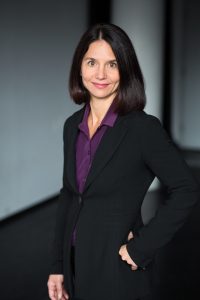Republished from GreenBiz
They embrace sustainability as an innovation challenge. They combat presentism. They develop integrative thinking. They expand the values that drive their business decisions. They collaborate with competitors.
Organizational psychologist Alice Mann talked with over 60 sustainable business leaders to find out how they’re innovating in the face of today’s global challenges. Her new book, Future First: How Successful Leaders Turn Innovation Challenges into New Value Frontiers, distills what she learned into these five business practices.
In Future First, Mann argues that the three biggest challenges we face—climate change, resource scarcity, and social dynamism—offer opportunities for business to get out ahead of tomorrow’s market demands and beat the competition, while making a positive impact on the world.
The Bard MBA’s Heather Bowden spoke with Mann about her work and Future First for the Impact Report.
The following Q&A is an edited excerpt from the Bard MBA’s May 4th The Impact Report podcast. The Impact Report brings together students and faculty in Bard’s MBA in Sustainability program with leaders in business, sustainability and social entrepreneurship.

BARD MBA: How did you become involved in organizational design?
I started my career working on global operating models. Then, I moved to New York and started my Masters and then my Ph.D. in organizational psychology at Columbia University, which is how I really got introduced to organizational design. In 2005, I started my own consulting firm, Mann Advisors, and for the last 13 years I’ve done all kinds of organization design work with big corporate clients as well as non-profits and social enterprises and mission-driven companies. I’ve seen how the tools and frameworks work across different sectors and different sized companies in different stages of development.
BARD MBA: What led you to create the Future First principles or “leadership mindsets”?
My book, Future First, came out of the combination of my background in tech innovation, financial services, and social science research and then organizational design. But what really catalyzed the idea of the book was Hurricane Sandy in 2012.
It was a disaster zone where I lived. It hit me then that climate change was creating more and more extreme weather events, that this was just a taste of what was to come, and that if left unchecked, storms such as these would really impact my kids’ generation.
So I started to think about what I could do. I went and talked to over 60 business and thought leaders in the field of sustainable business in one form or another. That’s how I started to identify what these companies were doing right in terms of their mindset, business capabilities and business practices. It’s also how I identified the things that I could help companies that wanted to develop these be successful.
So the Future First mindset, the elements in my book, and the practices are really what I’ve discovered from leaders who are already doing this.
BARD MBA: What are some of the Future First principles?
One of the practices is embracing sustainability as an innovation challenge. Another is what I call “presentism,” which is about not just short-term thinking in business, but about how so many of us are overwhelmed with information and data. We’re captured in the present to the point that it’s actually hard to wrap our minds around the changes that are coming in the next ten or more years.
Next is developing integrated thinking. This one I love. It’s basically not polarizing either thinking from a traditional business perspective in terms of financial metrics, or thinking about things only in terms of doing good—when scaling solutions to global challenges, it’s about how you do both. How do you come up with solutions that integrate both of these mentalities? It’s a real solution to the polarized thinking that we see in our political and cultural climate now.
The fourth element is expanding the values that drive business decisions. The idea here is that, if you’re more explicit about your values and also draw from the values of your stakeholders and customers, you may find that you can drive more value by speaking to a broader set of values in your decision making.
The final one is going beyond one company and one leader at a time. More and more customers are looking for solutions from more than one company and want companies to be collaborating and partnering. This is what drives innovation, this collaboration across entities.
 BARD MBA: What sets some of the more successful companies apart from the others?
BARD MBA: What sets some of the more successful companies apart from the others?
The companies and leaders who embrace these challenges as innovation opportunities get excited about them. They’re able to innovate within the framework of social and environmental limits. The innovation comes out of saying that there are limitations to the materials we can use, or how we can impact the environment, or how we invest in the people who produce whatever it is that we make.
Instead of pushing those limits aside, they treat them just like any other limit you might think of in a commercially successful enterprise, which is to make it profitable.